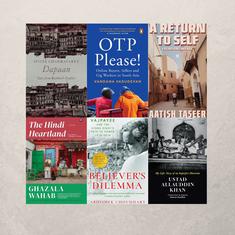What have wrestling matches in Bengaluru circa 1950 and accounts of Ram Manohar Lohia’s travels in the US got to do with our understanding of culture? Or for that matter, animals in films, women Sufi saints, village deities, barbers and hairstylists, or even an old land survey? Or literary titan Masti Venkatesh Iyengar’s “1931 Mysore Census Report” which “seemed like poetry”?
Sociologist Chandan Gowda’s latest book, Another India: Events, Memories, People, is a mosaic – a collection of myths, literary and historical nuggets, folklore, inscriptions, anecdotes, interactions with interesting people and portraits of popular icons. These short essays provide a kaleidoscopic view of our society as seen from different and differing perspectives, like Gowda, said, “There is no linear view of history.” Excerpts from a conversation:
In the opening essay, you point out the absence of a Kannadiga stereotype. It has to do with qualities like self-effacement and humility of individuals, apart from the diversity of cultures. Is this lack of a common identifiable characteristic an advantage?
Kannada speakers have tended to be non-assertive – self-effacing, as you say – in the places they have moved to. While a few pro-Kannada activists have viewed this as a weakness that lets them get pushed by others, I have seen this condition as a blessing – since the non-availability of a standard image of ourselves as a community means that we are freer in our self-explorations in the world.
Is Karnataka in itself a treasure house that provides for such an assortment of interesting bits of cultural anthropology?
A variety of profound moral and aesthetic visions have shaped the cultural universe of Karnataka over the centuries: Jaina, Saiva, Vaishnava, Islamic, Christian and the numerous moral traditions that go by the name of folk and tribal religions. So, yes, the traditions of the state are richly varied.
The insights here spring from various sources, from memoirs to policy documents. How does your collection of these cultural memories help redefine our idea of tradition and modernity?
The episodes I get us to encounter in the book are singular, and not typical, events. What makes them special has to be relished independently. I hope they convey what the heterogeneity of tradition feels like. They help experience time differently and actually pull time in different directions. So they shake up the straight-line view of history as a movement from primitive to modern society. Such a modern view of history makes us indifferent to living visions of humanism that it cannot understand. The linear view of time makes it easy for governments to justify high-handed action in the name of development, without allowing the scope to imagine plural futures for a society.

One interesting takeaway from the book is about how we can interpret faith and religion. Could you explain this?
The experience of “religion” found in India is truly complex. The idea of an all-powerful and all-knowing god is not found outside mainstream religious practices, which allows therefore for a freer, more intimate relationship between the devotees and god. Also, monotheistic and polytheistic faiths have lived side by side and influenced each other. All the holy places where Hindus, Muslims and Christians offer prayers show this co-influence in an obvious way.
A big desire of my book is that modern Indians ought to feel free to go beyond the binaries of the secular and religious in their thinking, which is trained to keep them apart. For instance, if you care for the dignity and fair treatment of workers, how can you stay away from the Lingayat philosophy which views different kinds of work as equally worthy? The latter can only enrich your imagination of equality and also include a wider set of people in the conversation you initiate.
And then, of course, myths and legends surrounding a modern technocrat like Sir M Visvesvaraya. What do they suggest – deep adulation or just folklore?
They are illustrative of various things. Viewing his deeds as evidence of India’s capacity to emulate the West shows in fact how the British succeeded in making an agrarian society like India accept the vision of an industrial future as desirable and inevitable. The myths around Sir M Visvesvaraya also endorse a naïve faith in technology-led solutions as the cure for India’s problems. A regard for his probity reveals a deep desire to see corruption disappear in public office.
You say all these narrative streams shape our democratic sensibilities. As a sociologist, what kind of material are you alert to?
I’m alert to any and all sources of civility that prevail around us – as they enrich our sense of how to be humane, how to be just. They include Rajkumar’s films, which held up a set of values of civility for over five decades, as well as the stories of village deities. I’m excited by any kind of narrative that renews my sense of wonder – moral, aesthetic and cognitive wonder – about the world.
Jayanth Kodkani is a Bengaluru-based writer.










